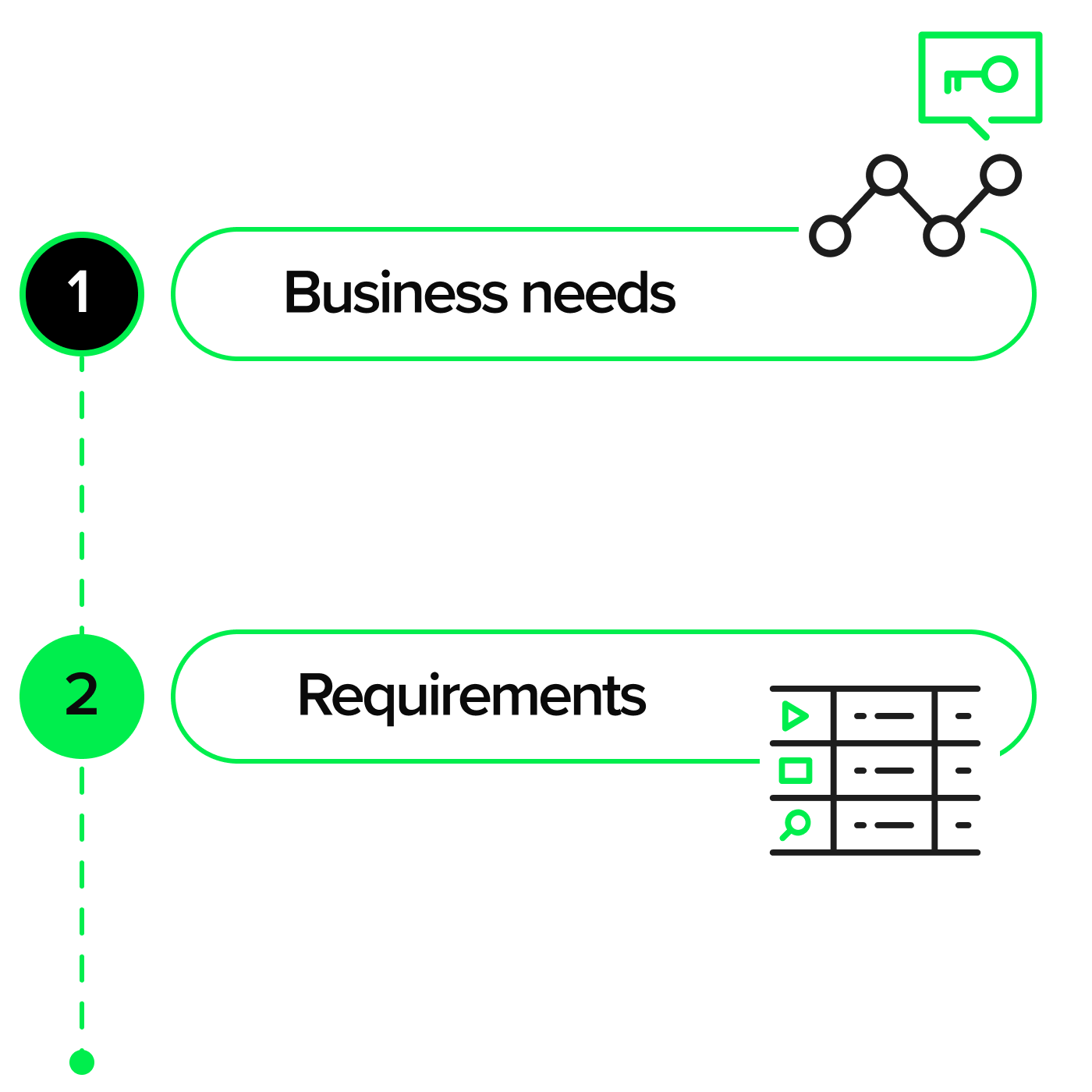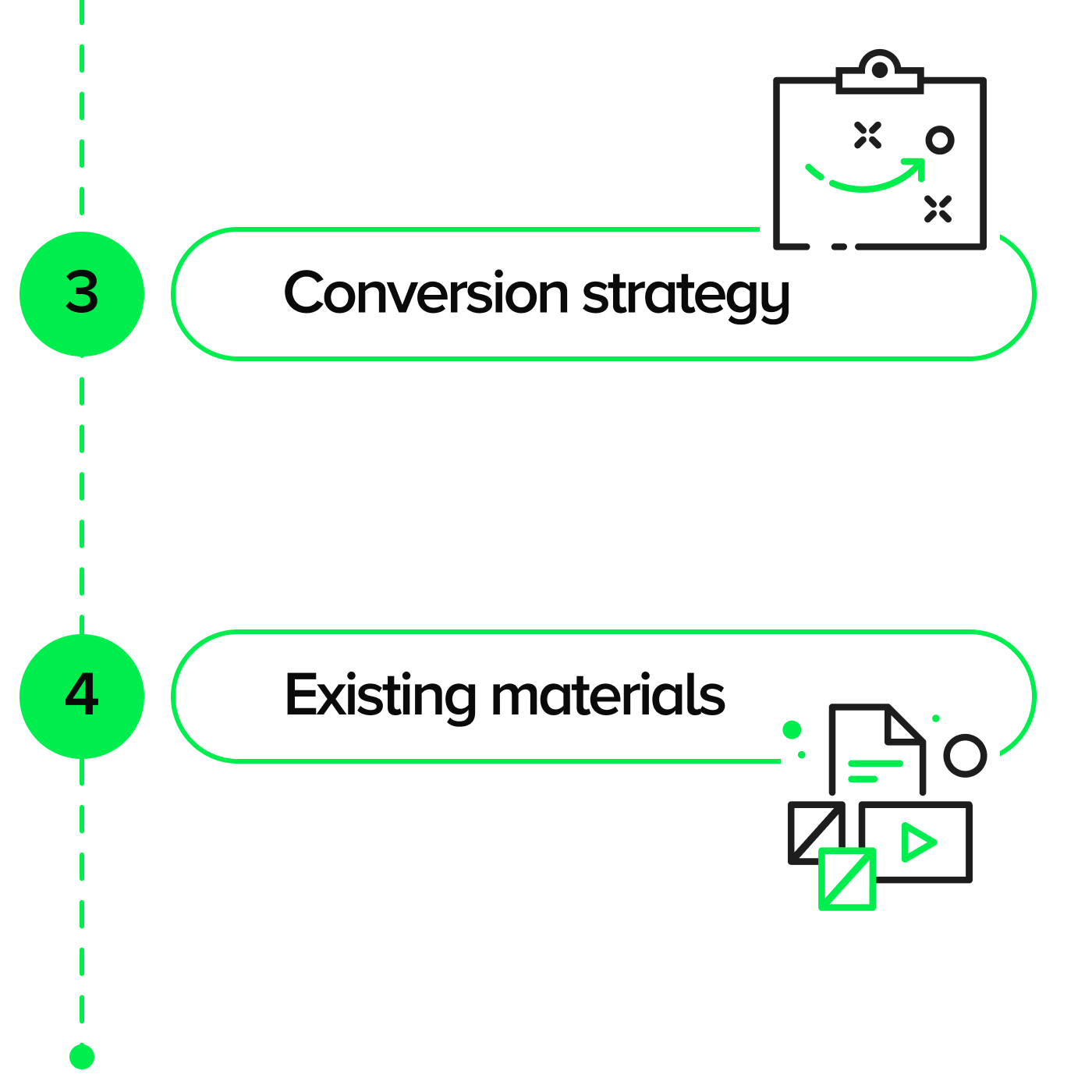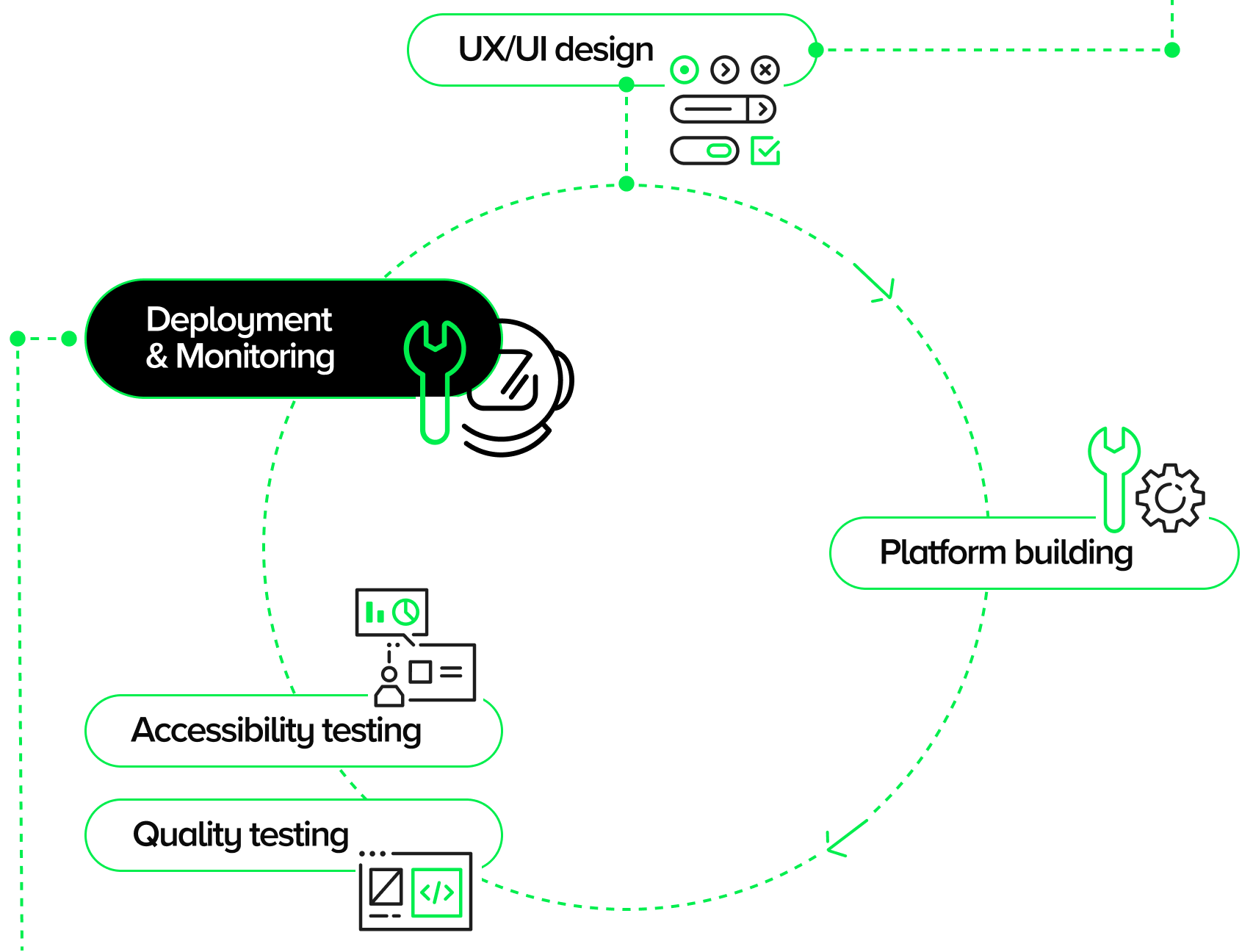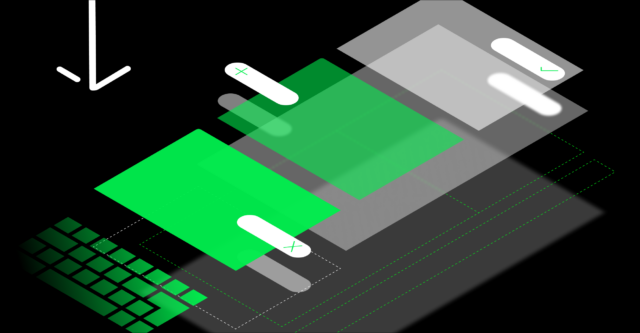Today, a strong online presence is more than just a necessity for companies—it’s an absolute must. Users search for information about your products and services online, and this is also where they make their purchases. Web platforms, such as product websites, e-commerce sites, mobile apps, and all other forms of ‘owned media,’ serve as key points of contact between consumers and brands. They also support companies in acquiring and analyzing consumer data, and in making crucial business growth decisions. Therefore, nurturing a digital presence is a mandatory path for any company aiming to build a positive brand image, communicate effectively with users, and steadily increase conversions and sales.
Understanding the importance of digital presence is one thing—leveraging this knowledge is key. The best platforms are those that are:
- Easy to use;
- Pleasing to the eye;
- Tailored to users’ needs.
The challenge for companies lies not only in building and maintaining their platforms but also in continuously updating them to keep pace with market trends and meet the preferences of their target audience. Although a professional approach to creating online platforms provides a competitive advantage, it is today primarily a condition for the survival and development of any business.
Challenges & Goals related to your platform
We’ve observed that our clients commonly encounter challenges in one or more of the following areas:

Do you want to solve similar problems?
Leave us your email and phone number—we’ll call you back within 24 hours to discuss your needs and challenges. Following this conversation, we can decide together on scheduling a follow-up meeting with our experts. They will delve deeper into your requirements to craft a tailored solution and outline the next steps.
How do we work?
Starting to work with us is more than just signing a contract. We ensure that the entire process is perfectly tailored to what your company needs. We guide you step-by-step through the project stages so that the online platform we create not only meets your expectations but also helps achieve your business goals.
↘︎ Step One: Discovery
Our collaboration begins with the Discovery phase. This is a process during which we conduct a detailed analysis of your needs and possible solutions for your platform. It is also at this stage that preliminary decisions regarding necessary actions are made.
After the Discovery phase, we have a prepared list of selected artifacts that serve as a reference point for the implementation phase. The artifacts from Discovery may include:
1. Mutual Understanding of Business Requirements
Ensuring that we have a mutual understanding of your business requirements. How many new leads should your platform generate each month? What is an acceptable conversion rate? How much peak sales traffic should the platform be able to handle? We want to ensure that success means the same to both of us. This is the foundation of the entire Discovery process, as defining your goals and needs allows us to develop further significant artifacts.
These requirements will determine how we approach functional requirements (e.g., what and how users will be able to do on your platform) and non-functional requirements (e.g., security, required performance parameters, etc.). By establishing specific business goals quantitatively, we will also be able to precisely answer the question: when and how will we achieve success?
2. Defining Functional and Non-Functional Requirements
By jointly defining functional and non-functional requirements, we create a comprehensive picture of how the platform should operate and the standards it should meet. Specifying what needs to be built eliminates any misunderstandings and ensures a mutual understanding of the project’s goals between our team and the client. This, in turn, prevents miscommunications and reduces the risk of needing to implement costly changes in later stages of the project. Functional and non-functional requirements also serve as criteria for testing the final product – they ensure that it meets all your business needs and is ready for use by the target user group.
Furthermore, defining these requirements allows for the creation of a roadmap of actions and the ongoing monitoring of progress, comparing it against the original assumptions. You have a clear picture of the project stage and whether its execution is proceeding according to plan, which gives you greater control over the process. In the end, a solid foundation of clearly defined requirements facilitates later expansions and modifications of the system, ensuring its scalability and adaptability to changing business needs without the need for a complete overhaul.

3. Developing a Conversion Strategy
Based on your business goals, we determine what will serve as the basis for measuring conversions on your online platform. This could be the number of products purchased, users registered, contacts with the sales department, or files downloaded. Decisions regarding the conversion strategy must be reflected in the backlog and the platform’s functional requirements. By working directly with your marketing agency and SEM/SEO agency, we ensure the consistency of all parties’ actions, which will translate into building more effective marketing funnels.
4. Reviewing Your Brand’s Existing Materials
“What do you have?” may sound like a slightly offensive question, but it truly isn’t. Analyzing your brand’s current materials helps us determine the starting point for our work. It allows us to identify areas that require improvement and reduces the risk of unnecessary work and potential costs.
At this stage, we also inquire whether your company already has a design system, which would lower the costs of implementing a new platform and simplify the work for both designers (who would have specific elements ready to work on) and developers (reducing the number of errors and shortening the implementation time). If your company does not yet use such a system, we evaluate whether it would be beneficial to introduce one.

5. Analyzing Competitor Online Platforms
To get ahead of the competition, it’s crucial first to know where they stand. Our goal is to use this information to develop a competitive edge for your platform, so it better meets the expectations and needs of your target audience—users who, through interactions with your site, will fulfill your business objectives.
6. Data Migration
Before we start creating new content for your platform, it’s crucial to properly manage the existing data. Throughout the operation of your current online system, valuable information has undoubtedly accumulated, which is too important to overlook. We need to collaboratively determine which pieces of information are worth transferring to the new system and decide how to do this most effectively. We also can’t forget about search engine optimization (SEO) to ensure that your new platform doesn’t drop in search rankings during its initial phase.

7. Information Architecture
Designing information architecture is essentially about creating a precise, clear, and intuitive roadmap for your users. It’s not just about making information available, but about presenting it in a way that naturally guides users through the process of discovering your platform, aligned with the conversion strategy and the goals we have set. This process includes stages such as user needs research, content analysis, defining information hierarchies, designing navigation schemes, and usability testing with users.
Why is Information Architecture Important?
- It makes it easier for users to find the information they need.
- It fulfills your business objectives, increases conversions, and facilitates the execution of specific tasks for the target user.
- The structure of information influences how content is indexed by search engines, which can affect the visibility of your site in search results.
8. Chosen Technology Stack
Our technology selection is not a random assortment of tools but a thoughtfully constructed framework. When deciding on a specific stack, we analyze aspects such as performance, scalability, security, and integration capabilities—each technological element is justified and enables your platform to operate in accordance with business needs.

9. Infrastructure
Along with selecting a specific technology stack, we must decide where your platform will be hosted. Sometimes the hosting location is already determined by the solution chosen earlier, such as with SaaS services or cloud hosting. In other situations, we need to determine whether our team will provide the necessary infrastructure, or if it will be supplied by your IT department. If it’s the latter, we establish the details of the cooperation and specify what exactly we will need both during the implementation phase and later, during the daily operation of the platform.
10. Integrations with Your Internal Systems
In companies that have undergone or are undergoing digital transformation, most platforms operate in conjunction with other systems within the organization. Whether it’s a CRM your company uses, or a PIM, ERP, etc., we need to know what we will be integrating the new platform with in order to define all dependencies and risks. Often in such cases, we also collaborate with the provider of the specific solution (especially if that solution has not been previously integrated with your former platform).

11. Established Decision-Making Process
We believe that collaboration, along with sincere and open communication, is fundamental. Therefore, it is crucial to establish decision-making authority early in the project stage. From our experience, the project requires centralizing decision-making on priorities and task sequencing in one individual on the client’s side (the Product Owner). This does not mean that this person must know everything—however, they make the final decisions based on all data transparently provided, which reduces the risk of delays and misunderstandings.
12. Project Risks
Together, we create a list of potential risks for the project as we perceive them. These include all the factors we depend on but over which we do not have full control – these require our special attention throughout the implementation process. For example, if we need to integrate the new platform with an older system that the company uses, we might identify potential risks in whether that system is suitable for such integration, whether we will have support from its provider, and what level of support that might be, etc. There can be many such risks, but listing them allows us to manage them, discuss them regularly, and make the best decisions depending on the situation.

13. Post-Implementation Requirements
How do you envision the handover of the completed platform? We assume that the project budget also includes training for your team on how to use the finished solution. However, do you intend not to manage the new platform internally and prefer that we and your digital marketing agency handle it? Do you also expect a specific Service Level Agreement (SLA) from us after implementation? Perhaps you anticipate that ongoing development of the platform is necessary and you need to establish a permanent team responsible for its maintenance? We want to understand all your expectations regarding the operation, support, and development of the new platform.
14. Creating the Backlog 1.0
The Discovery process concludes with the creation of what is called the Backlog 1.0, which is a list of tasks that also serves as the project’s roadmap at the initial stage.
The backlog is the most critical artifact of the Discovery phase. The tasks we have created within it reflect all other artifacts and are specific actions that the team of designers and developers can undertake.

15. Confirming the Anticipated Budget for Version 1.0
Only after completing the proper Discovery phase can we clearly determine the anticipated budget for your implementation. It would be difficult to do this before selecting specific technological solutions, understanding your requirements, determining which integrations with external systems are needed, and creating a backlog that summarizes all these premises, serving as our task list. If the budget after the Discovery phase exceeds your expectations, we discuss our findings and decide which tasks from the backlog should be postponed to subsequent phases of implementation (which are not covered by the current budget at that time).
Many clients consider it too risky to sign an implementation contract with a company that wants to confirm the budget only after the Discovery phase. We completely understand this concern, which is why we also offer just the conduct of the Discovery phase itself, after which you will receive the necessary materials to prepare a Request for Proposal (RFP). Thanks to a precisely defined backlog and all other artifacts from the Discovery phase, your company will be able to issue a tender, invite other companies, and compare “apples to apples” in the proposals.


Need to redesign your platform?
Discover the most effective approach with us
Leave us your email and phone number—we’ll call you back within 24 hours to discuss your needs and challenges. Following this conversation, we can decide together on scheduling a follow-up meeting with our experts. They will delve deeper into your requirements to craft a tailored solution and outline the next steps.
↘︎ Step Two: Implementation
Our UX/UI design team strives to create an intuitive and visually appealing design that perfectly meets the needs of your users. This means that every element is designed to make using the platform as easy as possible and to provide positive experiences, which in turn contributes to increased user engagement, improved conversion rates, and a lower bounce rate.
At the same time, our developers build the platform adhering to software development methods that are compliant with industry standards and focused on delivering the greatest value relative to the invested budget. The project work is organized in cycles, allowing for continuous tracking of progress and adjustment of plans according to current needs. For you, this primarily means that by seeing how individual elements of the jointly developed solution function, you can continually make decisions about whether to continue the work established in the Discovery phase or to change some of the assumptions and the backlog, within the agreed budget.

At this stage, our primary focus is to support you in making decisions that provide the best chance of achieving your goals while adhering to the budget. If necessary, we will guide you almost by the hand or have very frank discussions and explain why some ideas might threaten your goals or budget. We are here to ensure the safety of your investment.
We also conduct thorough testing of the platform to ensure its flawless operation, speed, compatibility with various devices, and security. We perform both automated and manual testing. During this process, we pay special attention to usability tests, which allow us to understand how users interact with your platform. This helps us identify and eliminate potential obstacles for users before the official launch. Accessibility tests ensure that the platform is available to all users, regardless of their abilities or the technologies they use. Ultimately, this leads to the creation of a product that not only meets your business expectations but is also valued by users for its ease and pleasure of use.

↘︎ Step Three: Deployment & Monitoring
After the tests are completed, the platform is deployed in the production environment, which was determined during the Discovery phase (refer to the section on infrastructure). Depending on your needs, we implement a maintenance model in which continuous monitoring of performance, security, and overall functioning of the platform is conducted to quickly address any issues in accordance with the SLA.
↘︎ Step Four: Training for Your Employees
Our products are designed not only to work, but also to make it easier for your business to work and achieve its goals every day. Our standard is post-implementation training for your employees to ensure a smooth transition to the new platform and maximum use of its features.
↘︎ Step Five: Support, Optimization & Development
Depending on your company’s needs and our previous agreements, your team can undertake this step independently or with our assistance. If we continue our collaboration, this part will require a separate development budget. Based on user feedback and data analysis from the platform and connected tools, we work on optimizing and introducing new features so that the platform can grow along with your business needs and user requirements. If these needs are not met, there is a risk that users will simply move to the competition.
If, during the Discovery or implementation phases, certain functionalities were placed in the backlog and omitted, at this stage it is necessary to decide whether they are still important for your company and worth implementing.

How much does an online platform cost?
We won’t sugarcoat it; an online platform is a multi-year investment for a company. Creating one is not a one-time activity—it requires building a team of several people for 3-4 months of work. We make every effort to ensure that scalability, security, updates, and maintenance are as seamless as possible for you and your employees. We collaborate with clients who are ready to invest from 150.000 EUR upwards in a new platform.
FAQ
- Do I migrate and update an old solution to the current version (e.g., from version 1.0 to 2.0 of a CMS)?
To answer this question with certainty, we should go through the Discovery phase together and decide during that phase whether updating the current version of your platform or building a completely new one is the best solution. If your platform has not been properly maintained, has been neglected, and has significant technical debt, it may be more cost-effective and safer for your business to build a new platform than to update the old one.
- How long does it take to form a team?
This of course depends on the size of the project, but on average, our time-to-hire is 18 days. For comparison, according to ATS Traffit, the average for software houses is 36 days. Thanks to our large candidate database, we are able to increase our teams twice as fast, according to demand. We also understand that your company’s needs may change and, when necessary, we can quickly scale down.
- How long will such an implementation take?
At least a few months – that’s the only answer we can give you before an initial conversation. The platforms we are discussing are complex systems, and even the process of creating the initial backlog (Discovery phase) can take several weeks of intensive collaboration with you and your team. During this time, we aim to understand and define your goals to effectively achieve them. It is important to us that at every stage you are confident that our actions are effective and leading to success. Only after this phase can we more accurately assess how long the entire implementation will take.
- How much will such an implementation cost, and how much will its maintenance cost?
Working on building the online platform we’ve described involves at least several months of work by a multi-person team. Therefore, we work with clients who are ready to invest a minimum of 500,000 PLN in new solutions. As for maintenance costs, everything depends on the chosen technology, whether we use an enterprise-grade boxed solution or open-source solutions, and whether and what level of support for your company is necessary.
- How will I maintain the platform? What skills do I need?
We can provide you with a platform that “just works,” and your team will be able to operate it independently for a long time. Unfortunately, this usually isn’t enough because there are many external factors to consider. That’s why updates to used frameworks, external tools, etc., are necessary to maintain an adequate level of security. We also assume that if you need the solution we offer, it is important to you in a business context, so it should be developed as your company and user requirements grow (new design trends, changing habits and expectations, etc.). We can transfer the maintenance process to your internal team of designers and developers, which we are happy to assist with, but often our clients want us to maintain their platforms, which usually results in a long-term collaboration.

Let’s talk about expected outcomes
Leave us your email, and we’ll schedule a conversation. We understand that every project is unique and comes with a variety of challenges, especially depending on the industry. That’s why our first step is to thoroughly understand the specifics of your needs. Our priority is to define and fulfill your expectations and goals to transform your online platform into an effective solution.


